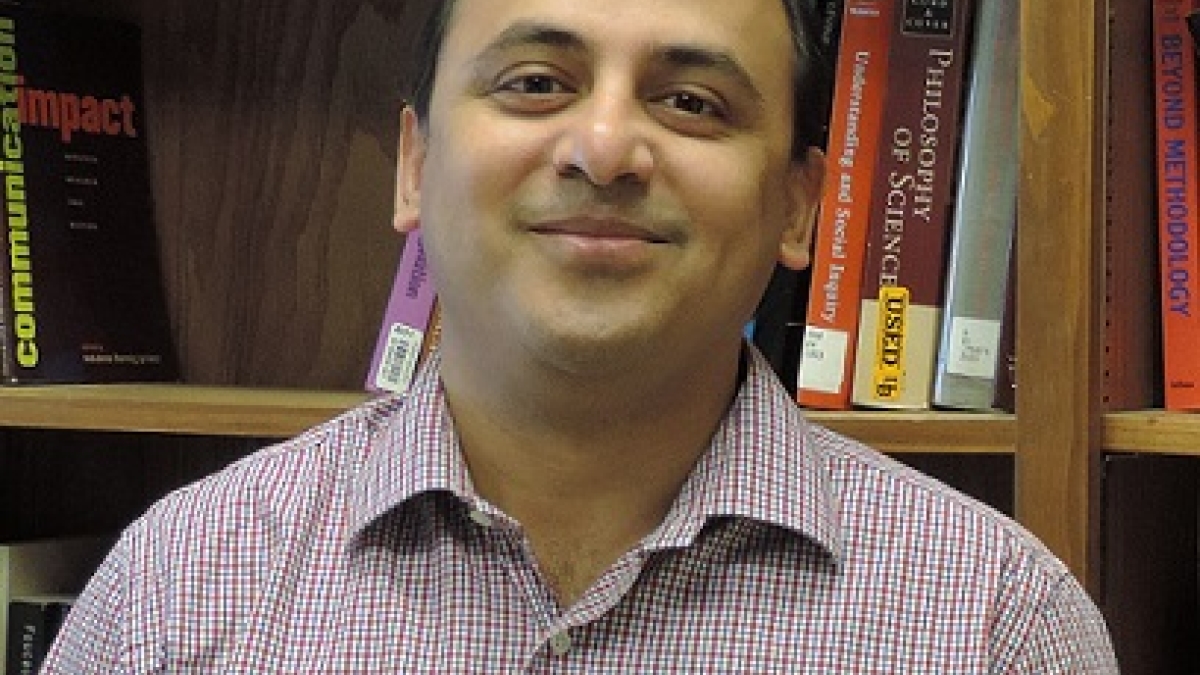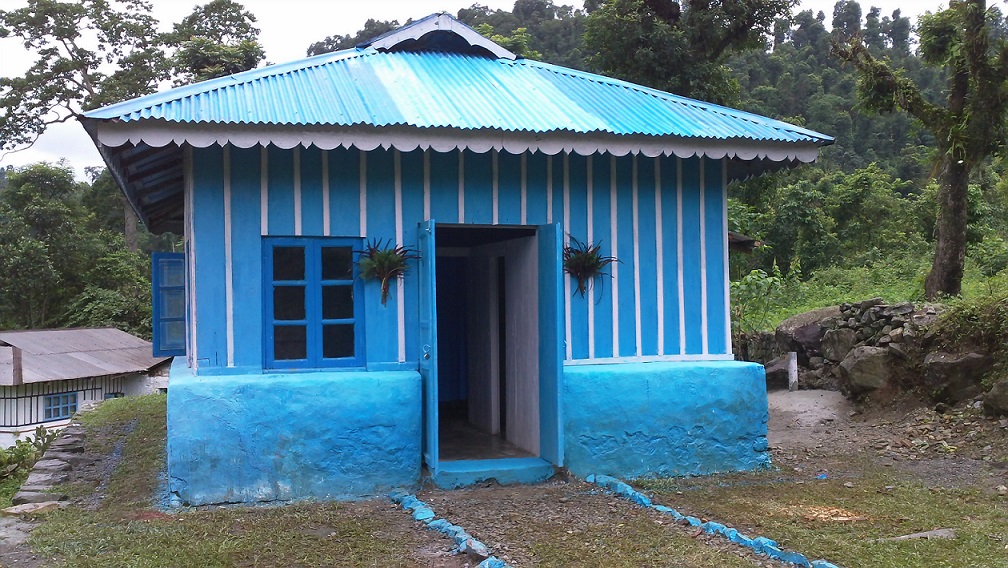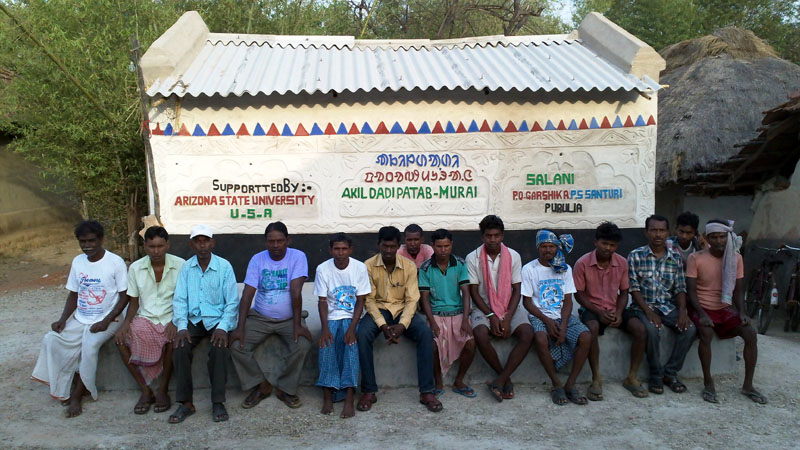ASU assistant professor takes an innovative approach to alleviating poverty

ASU Assistant Professor Uttaran Dutta first saw the importance of co-creating solutions while working in a remote tribal village in India. Locals explained to visiting civil engineers that their plan for a new dam wouldn't work. “The locals had seen three previous dams fail, due to the characteristics of the soil. The engineers went back and did more research and realized the villagers were right. Even with all their engineering experience, they couldn’t discount the collective knowledge of the community.”
The top-down international development model used by donors, development agencies and policymakers needs rethinking. Not only does it create aid dependence in communities, it often hinders the goal of sustainable development.
So contends ASU Assistant Professor Uttaran Dutta of the Hugh Downs School of Human Communication. Dutta feels that locally grown solutions represent a better alternative to foster meaningful growth for the world’s poor.
As an academic, he is plenty equipped to speak about poverty and the lives of the poor. Through his research activities in intercultural communication, he is dedicated to bringing access and transformation to marginalized societies.
But when it comes to knowing what underserved communities really need, he prefers to give up his “intellectual superiority” and become a servant to their aspirations and goals, partnering with them in finding solutions.
“My privilege — including my class, gender, caste, degree and position — poses a challenge to my ability to understand and address the crisis of poverty and other forms of marginalization in ways people experience it,” said Dutta.
Dutta adds that without a voice or capacity, the poor are merely passive recipients of state benevolence, researchers' or practitioners' interventions and donor assistance. “Poor people want to be able to express themselves, to create alternatives and to influence policy.”
Dutta first saw the importance of co-creating solutions while working on a communication design project to promote healthy behaviors in a remote tribal village in western India, while studying at the Indian Institute of Technology Bombay.
“Civil engineers, all highly educated professionals, came to this remote village to build a dam,” said Dutta. “However, a few of the locals explained to them that their plan wouldn’t work. They actually demonstrated why it wouldn’t work, performing traditional soil tests. The locals had seen three previous dams fail, due to the characteristics of the soil. The engineers went back and did more research and realized the villagers were right. Even with all their engineering experience, they couldn’t discount the collective knowledge of the community.”
Dutta says observing several such instances helped shape his decision to formally study communication for social change in an effort to solve problems in more culturally appropriate and sustainable ways.
As part of his research at ASU, Dutta engaged with geographically remote tribal communities in eastern India to conduct field research on everyday realities and communication practices.
“The villagers I met with were initially skeptical of me and my intentions,” said Dutta. “Especially when they learned I was associated with a foreign institution. As a researcher, once I made myself vulnerable and gave up my position as an expert, they began opening up about their ideas to transform their society.”

Four-bed mini-hospital
Dutta explained that together as a research collective they met every day to set goals and resolve conflicts. Community members were the key force in identifying and building cost-effective international development solutions using local resources.
“For under $5,000, as co-creators, we were able to construct a four-bed mini-hospital, a library that also serves as a museum and a protection wall to save sacred trees and other natural and cultural assets," said Dutta.
"We also inspired tribal youth to creatively solve local problems through a program called ‘Come, Let’s Build Something New.’ They identified everyday problems and were encouraged to come up with their own solutions.”

Computer application with signs and symbols for those who cannot read.
Dutta also collaborated with community members to co-develop a computer application to help those who were illiterate access useful information regarding local weather, employment, education and other basic services such as health care.
“The information is conveyed through sounds, pictures, symbols and signs they can understand,” he said.
Another computer application under development would allow villagers to record and preserve their culture, art and craft on their own.
“Using this, they can record their traditional songs, folklore and paintings, and take videos of their dances and performances. Soon they will no longer need outsiders to tell their stories for them,” Dutta said.
To pay for the raw materials and resources for these research initiatives, Dutta used funds he received during his doctoral studies in communication at Purdue University, as well as start-up funds he received as a new faculty member at the Hugh Downs School.
“It’s truly amazing how a few thousand dollars can transform a society,” said Dutta. “I am actively seeking additional grants to sustainably continue my work creating social change in underserved areas of the world.”
“This is socially embedded research exactly,” said Linda Lederman, professor and director of the Hugh Downs School. “Here we have a researcher who partnered with community members in such a way that when the researcher leaves, the community members are more empowered to continue their work.”

Library and museum
Dutta says that these projects demonstrate that empowerment does not come from outside, but from within.
“Now that these buildings and research outcomes exist, community members have a visual reminder of what they created," he said. "They might think, ‘If we can make a change in one instance, we can solve other local problems.’ Ultimately, this will reduce their dependency on external assistance, and provide them the conviction to transform their society on their own terms.”
More Environment and sustainability

Mapping the way to harvesting water from air
Earth’s atmosphere contains about 13 trillion tons of water.That’s a lot of water to draw upon to help people who are contending…

ASU researchers test environmental risks of tire emissions on Arizona highways
The Greater Phoenix area’s roadway grid system is the envy of urban planners everywhere, and the Arizona…

A 6-month road repair that only takes 10 days, at a fraction of the cost? It's reality, thanks to ASU concrete research
While Arizona’s infrastructure may be younger than its East Coast counterparts, the effects of aging in a desert climate have…

